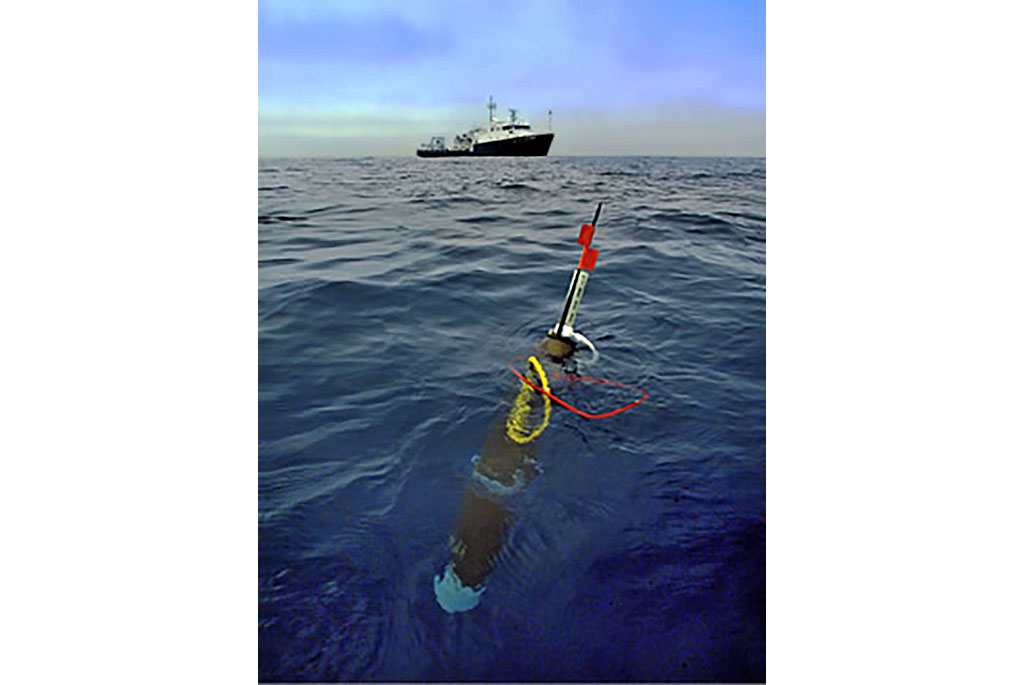They had been eaten. Equally astonishing would be the discovery in the afternoon that new plants had taken their place. This is the norm of life in the ocean. Without the ability to accurately observe these daily changes in ocean life cycles, over vast spatial scales, we lack the ability to predict how the ocean will respond to rising CO2 levels, crippling our ability to develop accurate models of global warming or devise strategies to prevent it.
The Carbon Explorer, conceived by Berkeley Lab’s James K. Bishop in collaboration with Scripps Institution of Oceanography (La Jolla, California) and WET labs, Inc. (Philomath, Oregon), bridges this observational gap. The device is a smart, low-cost robotic ocean float that measures carbon concentrations in the ocean. With its system of optical sensors, advanced communications devices, and remote operating capacity, the Carbon Explorer enables, for the first time, the continuous tracking of the biological processes of the carbon cycle in the ocean.
At present, model simulations of the ocean carbon cycle, carried out using the world’s fastest and most advanced computers, are the only way to attempt to predict the future of the ocean’s impact on climate change. The current generation of models includes biological processes, but only in a very simplistic way. The observations guiding model predictions are largely based on data collected from ships—which cannot work safely in bad weather or in remote ocean locations for very long.

In the North Atlantic west of Iceland, UC Berkeley graduate student Phoebe Lam and LBNL inventor Jim Bishop launch a Carbon Explorer from the National Oceanic and Atmospheric Agency’s research vessel Ronald H. Brown.
By contrast, Carbon Explorers have been deployed to date in some of the world’s most remote and extreme ocean environments, consistently yielding data that had never before been generated. Once placed in the water by research vessel, small boat, or aircraft, the Carbon Explorer activates and locates itself in space using signals from Global Positioning System (GPS) satellites, and then begins a mission based on a set of preprogrammed instructions. The Carbon Explorer collects temperature, salinity, and particulate carbon data at various depths down to several kilometers. Upon surfacing, the Carbon Explorer sends that data to satellites overhead. The device can stay in the ocean year-round to observe the annual variations in the ocean carbon cycle. It measures particulate organic carbon at a level of accuracy, precision, and frequency previously unachieved, and it does so in real time.
The Carbon Explorer has already led to new insights – and shown some weaknesses in our current understanding – that will enable better model-simulation accuracy. In the not-too-distant future, Carbon Explorer technology will form the basis for a global carbon observing system capable of real-time assessment of atmosphere-to-ocean exchanges of CO2. Equally important, this technology will provide the observational basis for accurate models of the carbon cycle and thus guide human efforts to control the release of CO2 to the atmosphere.
